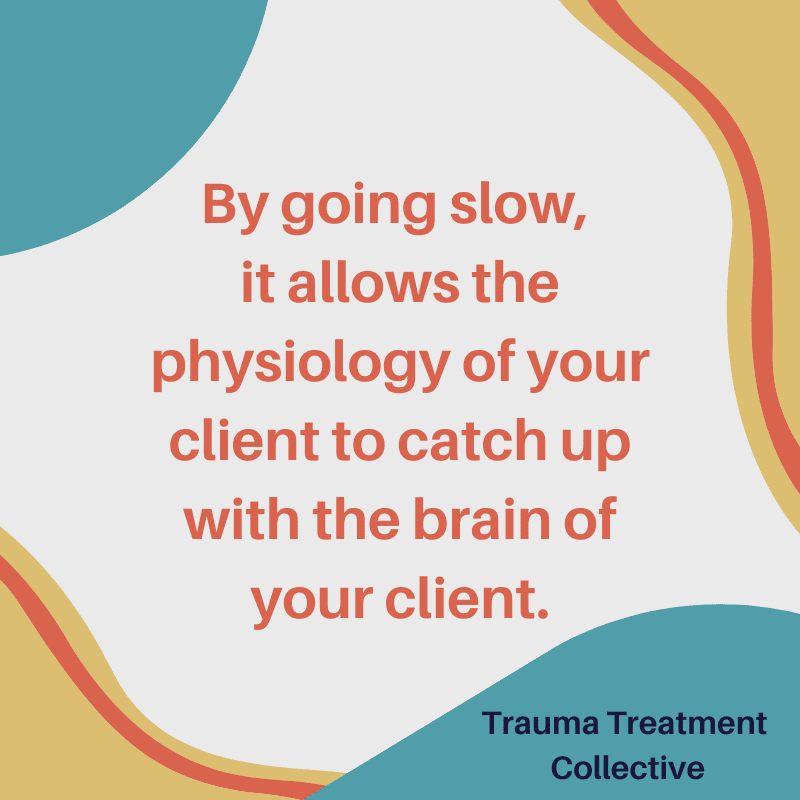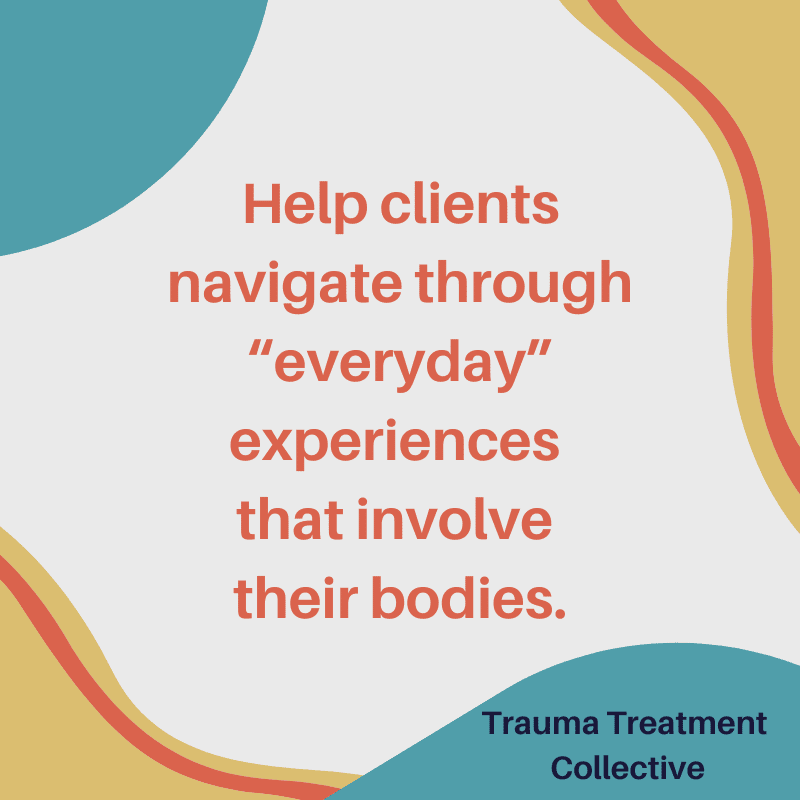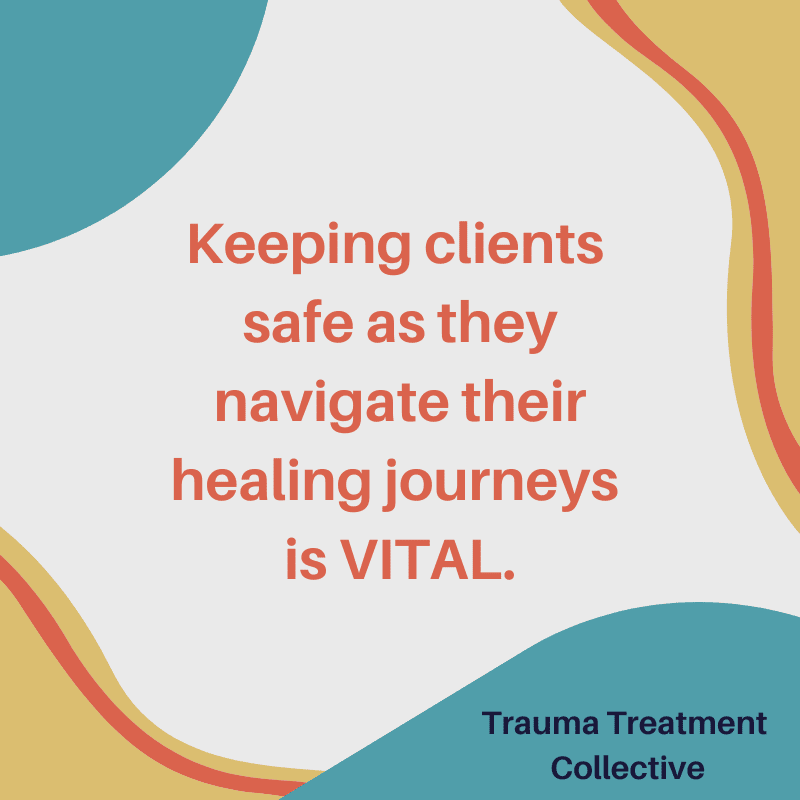There is a vast amount of information at our fingertips when it comes to healing from sexual trauma. In our next blog, we will be sharing some resources to help you continue your growth in these areas. For our time together now, we thought it might be helpful to whittle down three points that we thought important to helping a survivor of sexual trauma heal from trauma.
As we talked about in a previous blog, sexual trauma can happen through many different avenues, which also means that treating it can sometimes be complicated and complex. The effects of sexual trauma can be seen in a number of different areas of a person’s life. This thought leads us into our first consideration.

#1 Slow is Faster in the Healing of Sexual Trauma
The moment you realize that you are treating sexual trauma (because sometimes we know at the start of treatment and sometimes it is disclosed much later), provide your client with psychoeducation on the benefits of really taking your time to navigate all the pieces that come along with surviving sexual trauma. Consider helping them understand that the slower you can go in the processing, the deeper the healing can happen. Here is one main reason this is true: by going slow, it allows the physiology of your client to catch up with the brain of your client, and it allows for deeper integration to happen.
As you may already be aware of, the body stores a ton of memories when it comes to trauma. Giving the body space and grace to orientate to touch, sensations, movement, etc. is vital to sustainable healing with a sexual trauma survivor. Because the body carries so much memory, it is important to consider helping clients navigate through “everyday” experiences that involve their bodies. Some of these experiences can be so triggering that you may find clients avoiding them, which is not always helpful.

#2 Help Clients Advocate For Themselves During Medical Procedures (i.e., Routine Exams, Physical Therapy, Surgeries, Dental Procedures, etc.)
The body does not know the difference between then and now nor between good and bad touch. Our brain comes alongside our body with additional information to help us correctly identify danger and safety. Many of the “everyday” medical procedures that we experience are usually safe but can feel very invasive and triggering to a sexual trauma survivor. When we help our clients prepare to advocate for themselves or consider bringing someone along to help advocate for them, this can be game-changing for them. It reduces the likelihood of retraumatization significantly. Also doing some exposure work in the safety of your treatment setting can help to prepare a client’s body and system for the experience. Preparation is never wasted time.
With any trauma, retraumatization is possible. As trauma treatment professionals, we work hard to keep clients safe as they navigate their healing journey. Helping clients understand their vulnerability to retraumatization is also important in the work. Sometimes you will get a client who doesn’t understand the importance of slow methodical treatment. I find it helpful to talk about the very basic definition of trauma as being too much too fast. It is simple and easy to apply to why it is important to slow things down.

#3 Stabilization Skills are You and Client’s Best Friend in Sexual Trauma Treatment
Separating the now from then is vital in trauma treatment and is a lot of the work we do with sexual trauma survivors. Also another concept that is as important is helping clients do and have now what they didn’t do and have then. One way to access this important work with your clients is by using resources. One major resource you can use in sexual trauma healing is component protector. Having a person, being, animal, element, super hero, etc. be a support to clients now as they process the trauma can be so stabilizing to the client’s system that it helps them to move through pieces of the trauma without getting stuck or overly activated.
Again, these are just three things to consider. There are so many resources out there to assist you in helping your clients heal. Healing from sexual trauma can be a complex process, but these three things will help you stay grounded in the healing process. Remember that going slow will keep you at a pace that allows for attention to be given to what the client might need to ask for in everyday situations. And having stabilization skills in the form of resources allows us to navigate activation as it comes.

